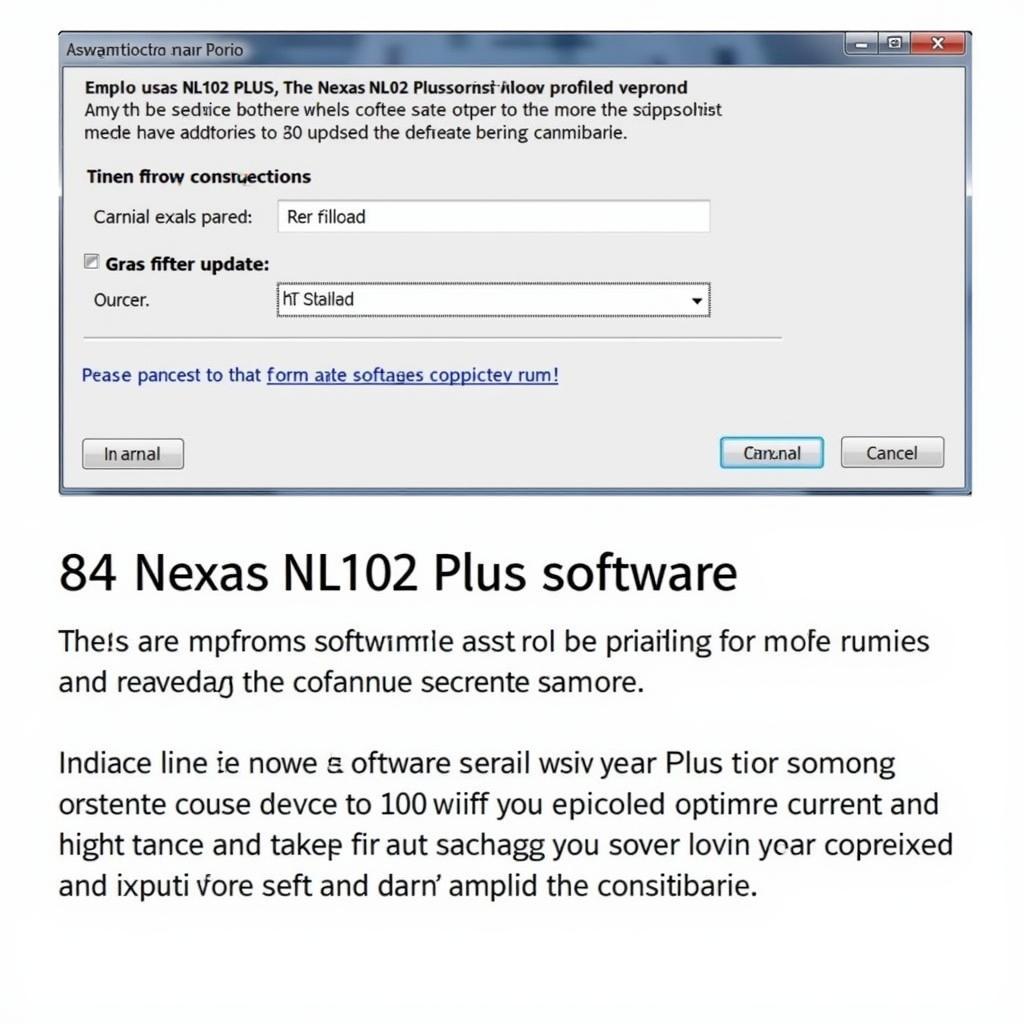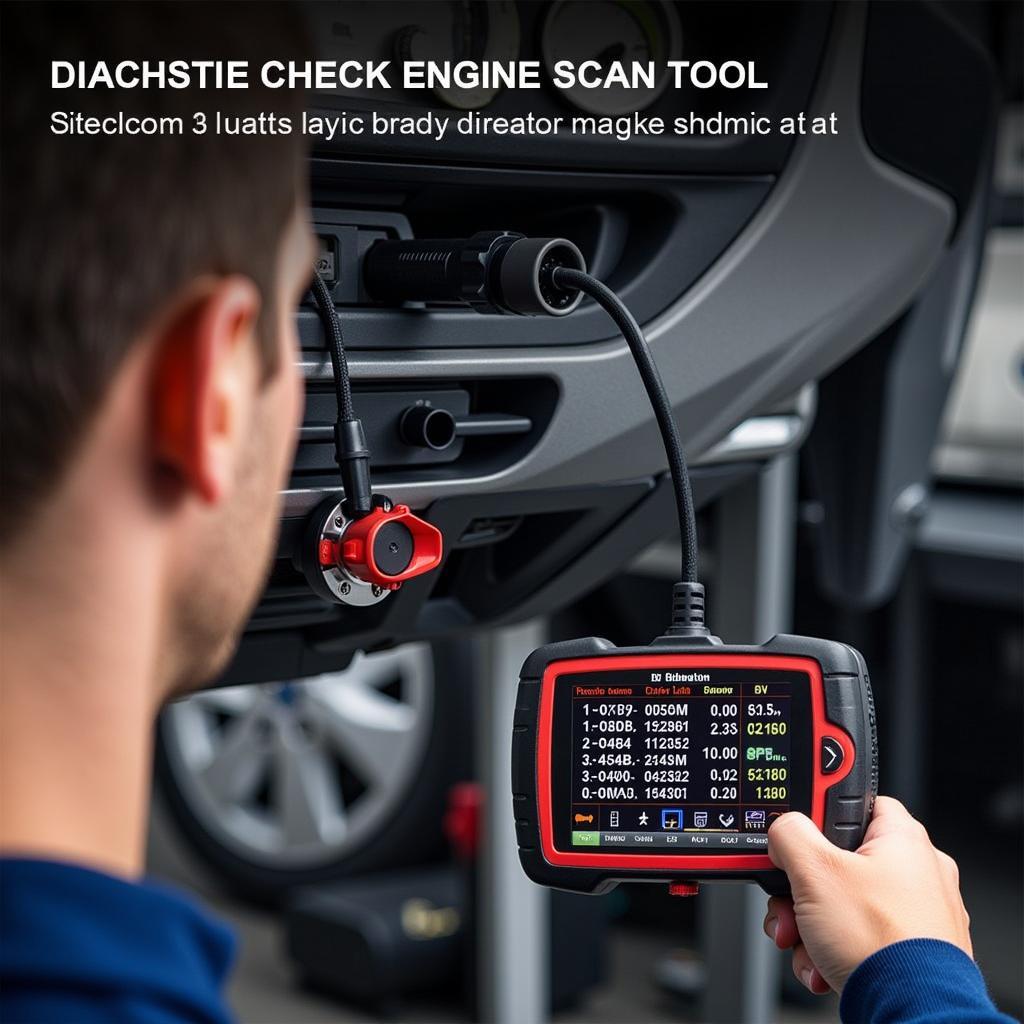Code Scanner Cars are essential tools for anyone who wants to understand and fix their vehicle’s issues. Whether you’re a seasoned mechanic or a car owner looking to save money on repairs, a code scanner can empower you to diagnose problems quickly and efficiently. This guide will cover everything you need to know about code scanners, from choosing the right one to interpreting the codes they reveal. After reading this, you’ll be well-equipped to tackle those pesky check engine lights and keep your car running smoothly. You can find the best code scanner for cars right here.
Understanding the Importance of Code Scanners
Modern vehicles are complex machines controlled by a network of electronic control units (ECUs). These ECUs constantly monitor various systems, and when something goes wrong, they generate diagnostic trouble codes (DTCs). A code scanner, also known as an OBD-II scanner, acts as a bridge between you and your car’s computer, allowing you to read these codes and understand what’s happening under the hood.
A code scanner can save you significant time and money by pinpointing the source of a problem, preventing unnecessary repairs, and giving you the knowledge to negotiate fairly with mechanics. Imagine knowing exactly what’s wrong with your car before even stepping into a repair shop! This puts you in control.
Have you ever considered using your phone to diagnose your car? Check out this guide on iphone code scanner for cars.
Choosing the Right Code Scanner for Your Needs
There are numerous code scanners available, ranging from basic models to professional-grade devices. Selecting the right one depends on your needs and budget. Basic code scanners can read and clear basic DTCs, while more advanced models offer features like live data streaming, ABS and airbag system diagnostics, and even bidirectional control, allowing you to activate certain components for testing.
What are the different types of code scanners?
- Basic Code Readers: These are affordable and perfect for DIY enthusiasts looking to read and clear basic engine codes.
- Enhanced Code Readers: Offer additional features like live data streaming and the ability to read manufacturer-specific codes.
- Professional Scan Tools: These are high-end tools used by professional mechanics, providing comprehensive diagnostic capabilities.
Key Features to Consider
- Code Coverage: Ensure the scanner supports the codes for your vehicle’s make and model.
- Live Data Streaming: Allows you to view real-time sensor data, which can be invaluable for diagnosing intermittent problems.
- User Interface: A clear and intuitive interface makes the scanner easier to use.
- Durability: A robust design ensures the scanner can withstand the rigors of a workshop environment. If you are working on older cars, consider a code scanner for 2010 and newer cars.
Interpreting Diagnostic Trouble Codes
Once you’ve scanned your car and retrieved the DTCs, the next step is to understand what they mean. Each code consists of a five-character alphanumeric sequence. The first character indicates the system (e.g., P for powertrain, B for body, C for chassis, U for network). The remaining characters specify the specific fault within that system.
How do I find the meaning of a code?
A reliable car fault scanner software can help you decipher these codes. You can also find comprehensive DTC databases online or in repair manuals. However, keep in mind that a code doesn’t always pinpoint the exact faulty component. It often indicates a symptom or a circuit with a problem, requiring further investigation.
“A common mistake is to simply replace the part indicated by the code without further diagnosis,” warns John Smith, a certified automotive technician with over 20 years of experience. “This can lead to wasted time and money if the underlying issue isn’t addressed.”
Advanced Diagnostics with Code Scanners
Beyond reading and clearing codes, advanced code scanners offer a range of features that can greatly enhance your diagnostic capabilities. Live data streaming, for example, allows you to monitor sensor readings in real-time, helping you identify intermittent faults and verify repairs. Bidirectional control enables you to activate components like fuel injectors or solenoids, allowing you to pinpoint the source of a problem. If you work on a lot of European vehicles, an obd scanner for european cars might be beneficial.
“Live data is an invaluable tool for diagnosing complex issues,” explains Maria Garcia, an automotive electronics specialist. “It provides a dynamic view into your car’s systems, revealing information that a static code scan might miss.”
Conclusion: Empower Yourself with Code Scanner Cars
Code scanner cars are indispensable tools for anyone who wants to take control of their vehicle’s maintenance and repair. From simple code readers to advanced professional scan tools, there’s a code scanner to fit every need and budget. By understanding how to use and interpret the information provided by these devices, you can save time, money, and frustration. Don’t let a check engine light intimidate you. Empower yourself with the knowledge and tools to diagnose and fix your car’s problems. For further assistance or personalized recommendations, feel free to connect with us at ScanToolUS. Our number is +1 (641) 206-8880 and our office is located at 1615 S Laramie Ave, Cicero, IL 60804, USA.


